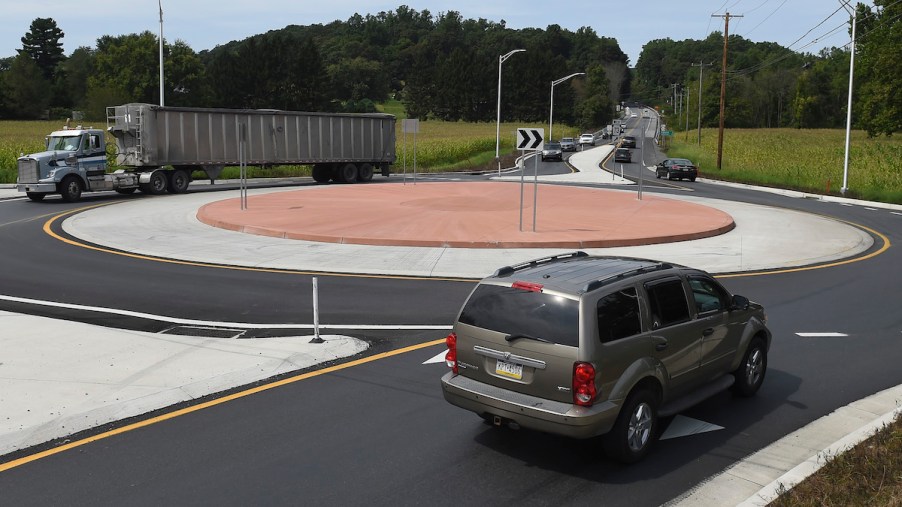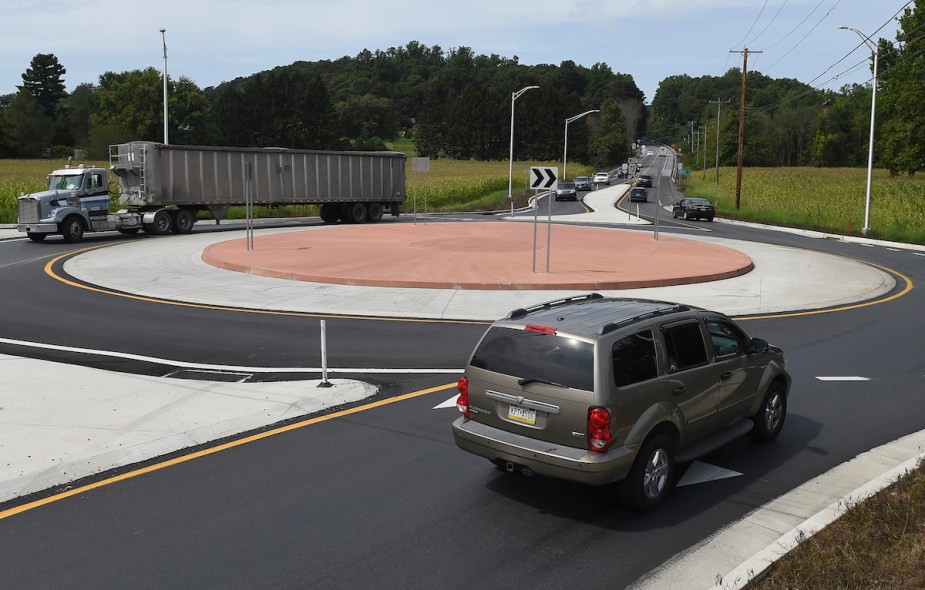
What Are Roundabouts and How Do They Work?
Roundabouts are traffic-control devices that have gained popularity in recent years due to their ability to significantly improve driving by reducing traffic congestion. Not to mention that roundabouts are typically safer than other forms of intersections. So, let’s dive right in and find out what they are and how they work.
The importance of traffic safety, particularly at various intersections

There are several types of roundabouts. Some are designed to improve traffic flow, and others are used to make intersections safer. Before going into detail about each type, let’s explore the problems roundabouts solve.
In the United States, roundabouts have been cited as a safety improvement for traffic flow and reducing speed limits in some states because research has indicated that converting standard intersections to roundabouts leads to a reduction in crashes by up to 80%, as per Erie Insurance. However, there is also evidence that roundabout conversion slows traffic speeds due to drivers’ tendency to decrease following distances, adversely affecting the rate of other vehicles.
- Speed: Roundabouts slow traffic. Their design alone causes the speed of traffic to slow down—this, in turn, reduces the severity of collisions.
- Safety: Most modern ones have a design that ensures that approaching vehicles must slow down to about 10 miles per hour before they enter the circle; this allows pedestrians, cyclists, and people who use wheelchairs more extended amounts of time to cross through them safely.
- Direction: Roundabouts eliminate the need to come to a complete stop at an intersection, reducing the risk of rear-end collisions. They connect through traffic with cross-street traffic, allowing drivers to keep going in the same direction rather than having to turn—this also helps reduce instances of running stop signs and red lights.
Roundabouts are also safer for pedestrians because most have sidewalks built directly in the center, so it’s much easier for people to cross over or through them.
What are roundabouts?
Roundabouts are circular intersections that use sweeping curves of paved roadways to channel traffic into an orderly flow around them. Rather than signals or signs like conventional intersections, roundabout operators utilize “give way” markings on the pavement at critical positions to control which vehicles may proceed at any given time during peak traffic hours.
In addition, since most roundabout curves exit the circle on its outer edge, vehicles are forced to choose from a limited number of lanes at this point, reducing conflicts at intersections. Roundabouts also serve as an intersection design where more significant and critical roads intersect with smaller streets or avenues.
How do roundabouts work?
At a roundabout, motorists drive around a central island in either direction, choosing the lane that will take them to their desired road. Since each route is accessed independently by the traffic around the island, conflict points between vehicles reduce dramatically compared to an intersection controlled by signals or signs where conflicting movements are required to share the same roadway space.
How do you know has the right-of-way?
Roundabouts make decisions differently than conventional intersections; however, the basic principles for making decisions are the same. The design generally allows traffic to move around them in a controlled manner, so there is no need for traffic signals or signs that usually show which vehicles have the right-of-way.
The answer is simply that no one has it! These types of intersections do not have a “leading” vehicle, but they do let go of the concept of having rights-of-way. As a result, when two vehicles approach very low speeds, they will often come to each other too closely, resulting in potential collisions. It is one of the primary reasons roundabouts are preferred.


